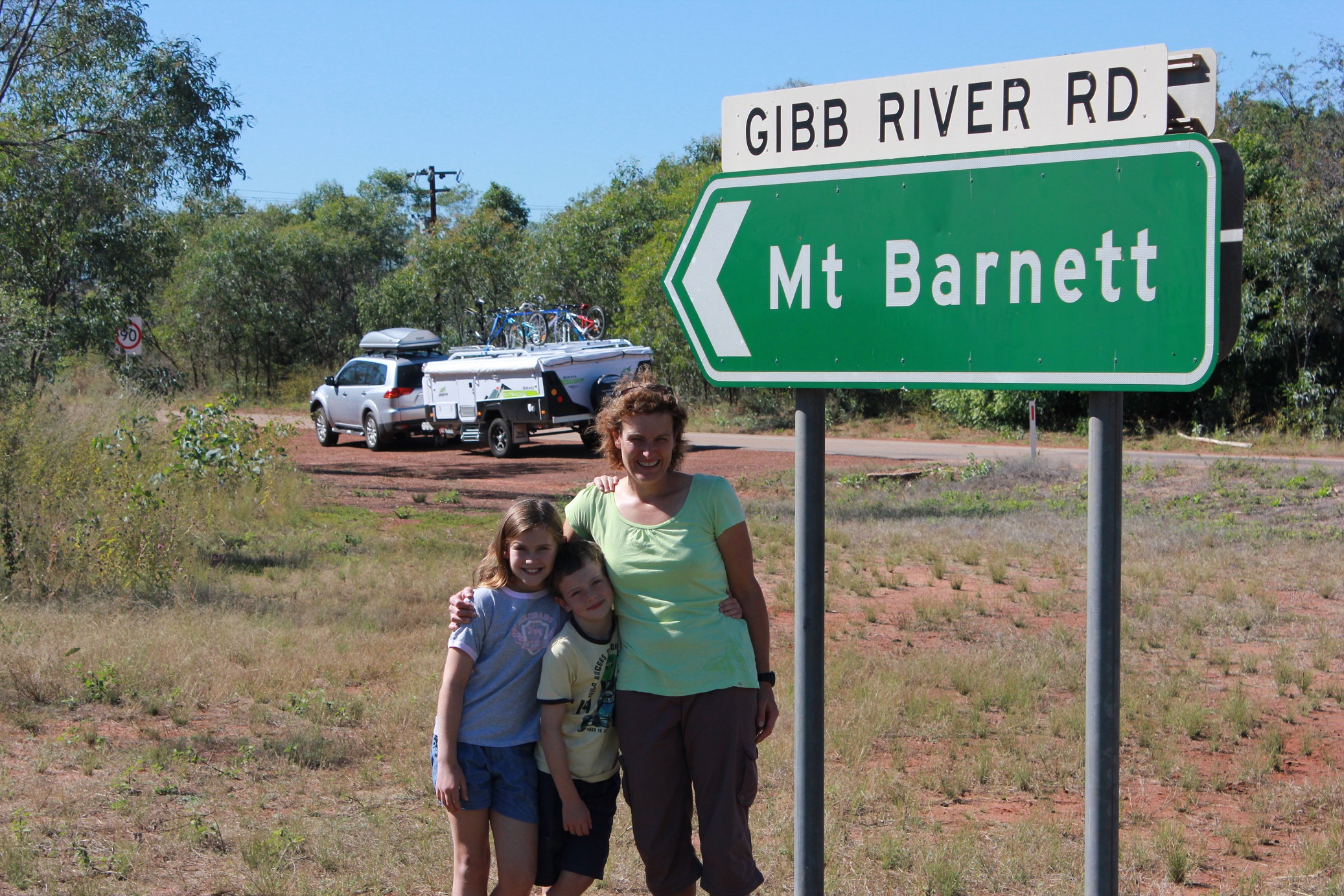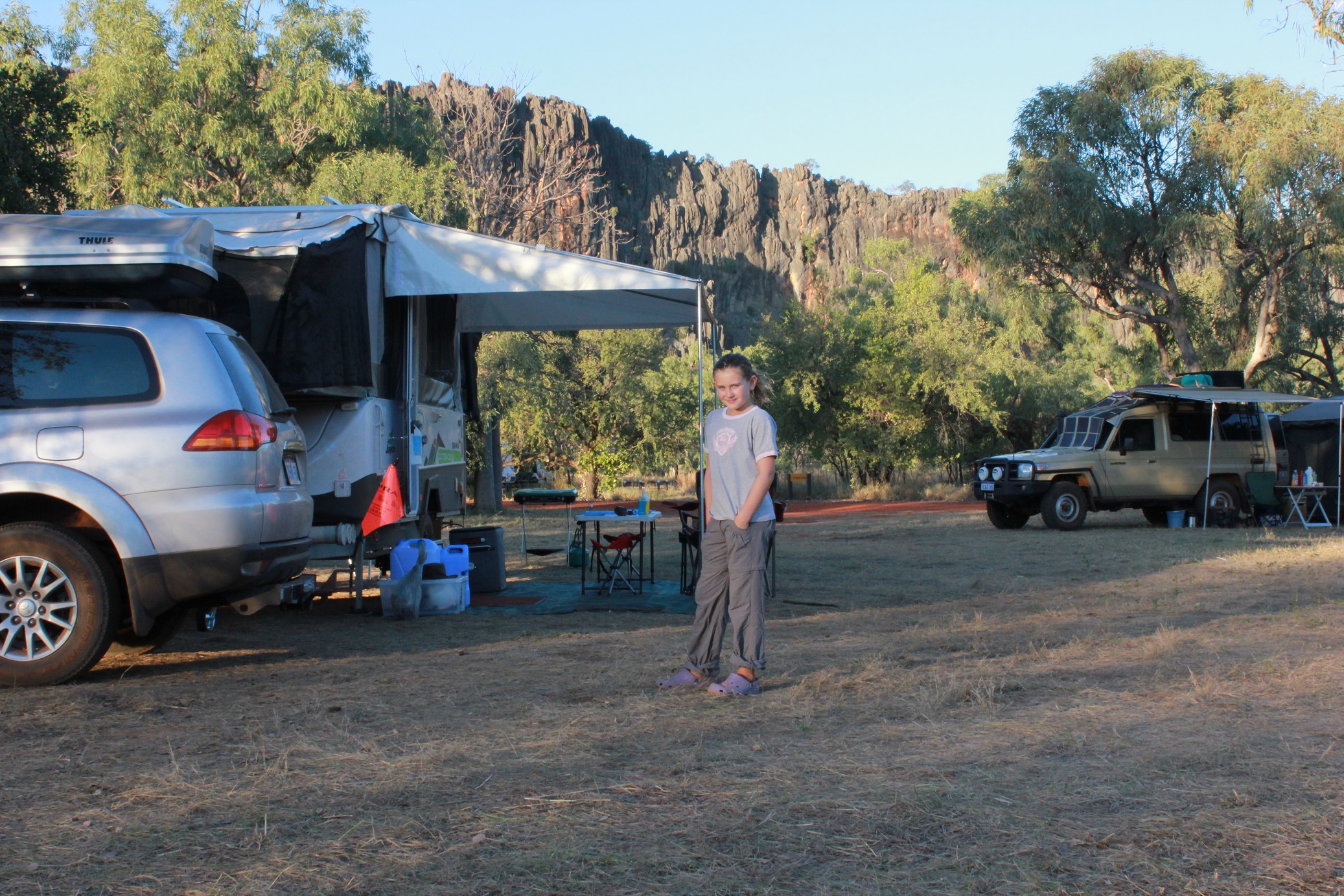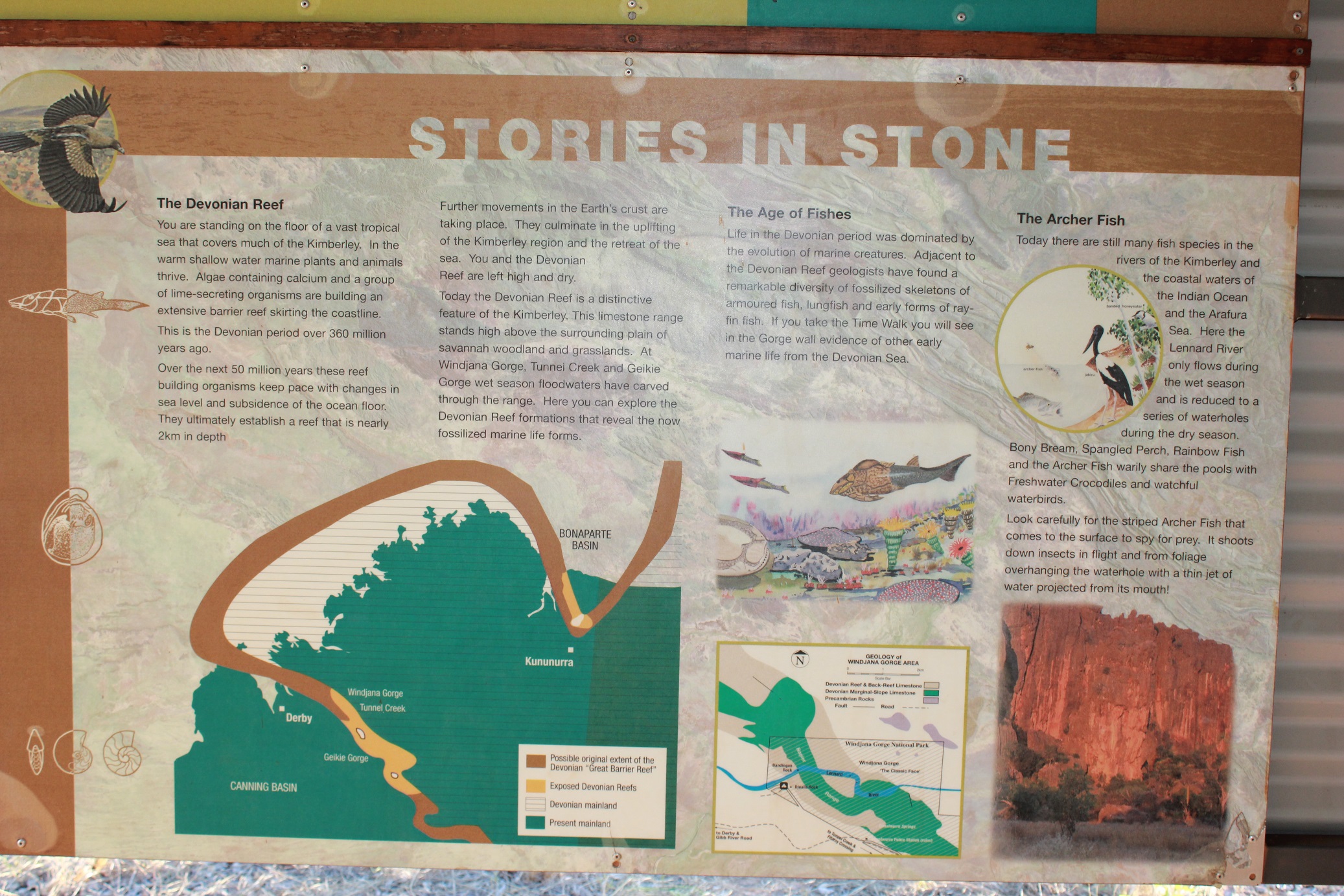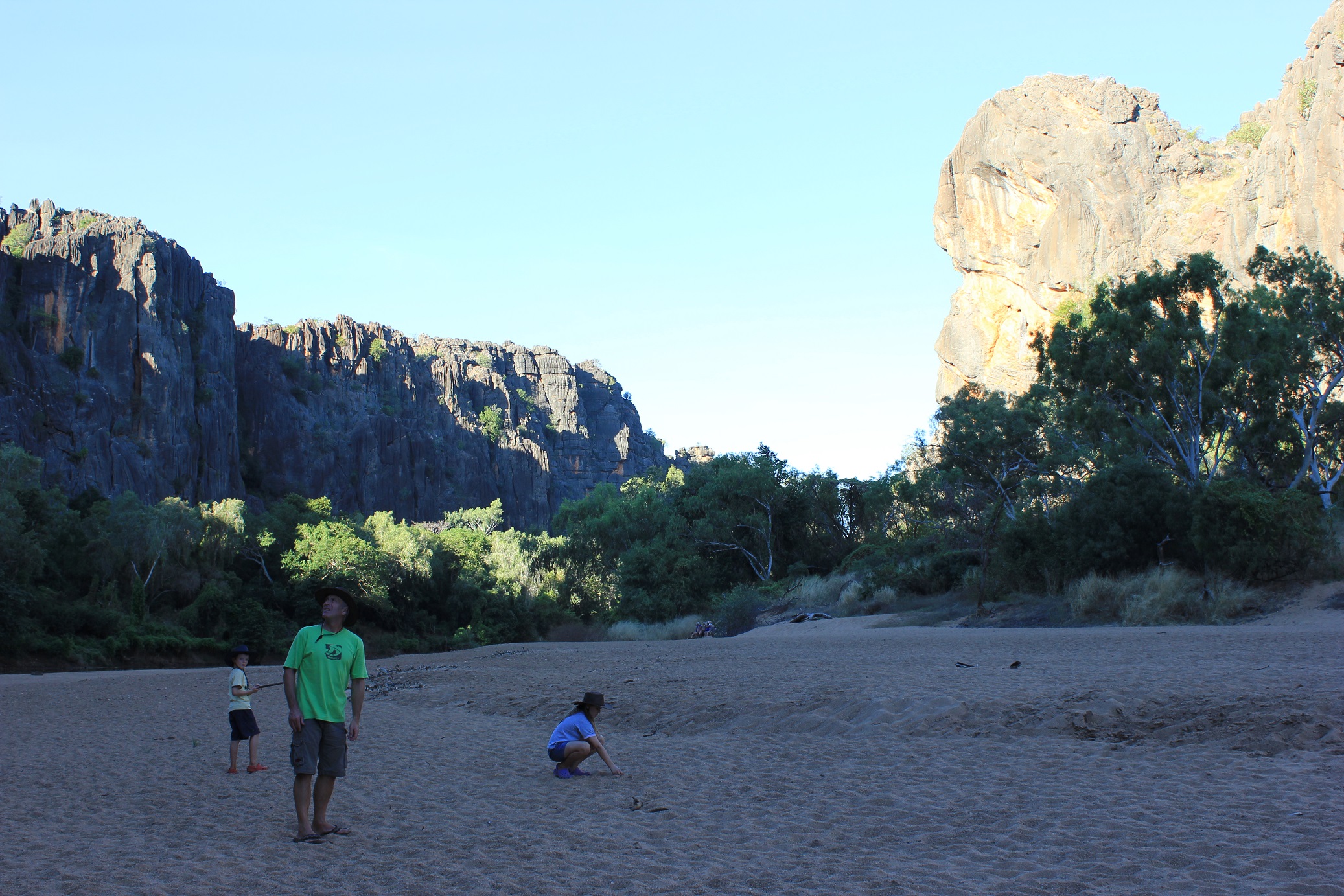Packed up camp and set off for the Gibb River Road which starts a few kilometres out of Derby. The road was originally built for transporting cattle from the isolated stations to the ports of Wyndham and Derby.
The first 120 kilometres of the road are sealed then its dirt for most of the remaining 540 or so kilometres to the junction with the Great Northern Highway between Wyndham and Kununurra. The condition of the road depends largely on whether it has been recently graded. When we hit the dirt we were surprised at how smooth the surface was (this’ll be a doddle!) so we cruised along serenely towards the Windjana Gorge with loomed up like a black wall on the horizon.
The Windjana Gorge campground is situated at the foot of the cliffs, close to the gorge entrance. The only obstacle we encountered was a dry creek bed on the drive in to the campground. The cliffs are the remains of a Barrier Reef that was formed in the Devonian period around 350 million years ago. The gorge has been carved through the reef by the Leonard River. It is magnificent! The black cliffs are streaked with patches of pinky orange (a technical term) and there are large caves high up in the cliffs. Trees cling to fault lines the cliff face.
We set up the camp then strolled through the campground to the gorge entrance, the path winds through some large boulders and a narrow cave then down to the river bank.
The river was almost dry but some large pools with sandy banks remain, they looked cool and inviting but were occupied by lots of Freshwater Crocodiles:
We followed the path upstream to a wide sandy beach that stretched out to a large, white and pink marbled rock. The river bank was lined with lush vegetation – The colours on the rock and the surrounding cliffs became more vivid in the late afternoon sun – the pinky orange patches in the cliffs turned more… pink!
The gorge echoed with the sounds of the birds. As we stood on the beach marvelling at the sights and sounds around us a large crocodile cruised over and stopped just off the beach, it stayed perfectly still, watching us with only the top of its tail and its eyes above the surface (see below):
On the way back to the campground we stopped to watch some mall Wallabies tentatively approach the water’s edge on the far bank, they were definitely aware of the large black shapes lurking in the shallows. Eventually they made their way to a small safe pool on the bank (very sensible!). Oliver was very disappointed – he would love to have seen some action. As we continued back to the campground we kept our eyes open for a large Olive Python (3 to 4 metres) near the entrance cave, we had been told about it and saw some photos that someone had taken earlier in the afternoon. Apparently it’s a regular visitor to the cave. We could see the snake’s trail along the bottom of the cliff face, it was clearly a big snake, but we didn’t see it. Back at the camper Emily cooked Spag Bol for dinner (smashing!) then we star gazed – the sky out here is so clear, there are so many stars in the Southern Hemisphere sky, we could see the Milky Way.
The campground is really good, it’s run by the Department of Environment and Conservation (DEC) and only costs $26 per night. There’s plenty of fresh water, hot showers and flushing loos! It’s better maintained and much cleaner than many of the more expensive campsites we’ve visited. We can run the generator between 7AM and 8PM.




